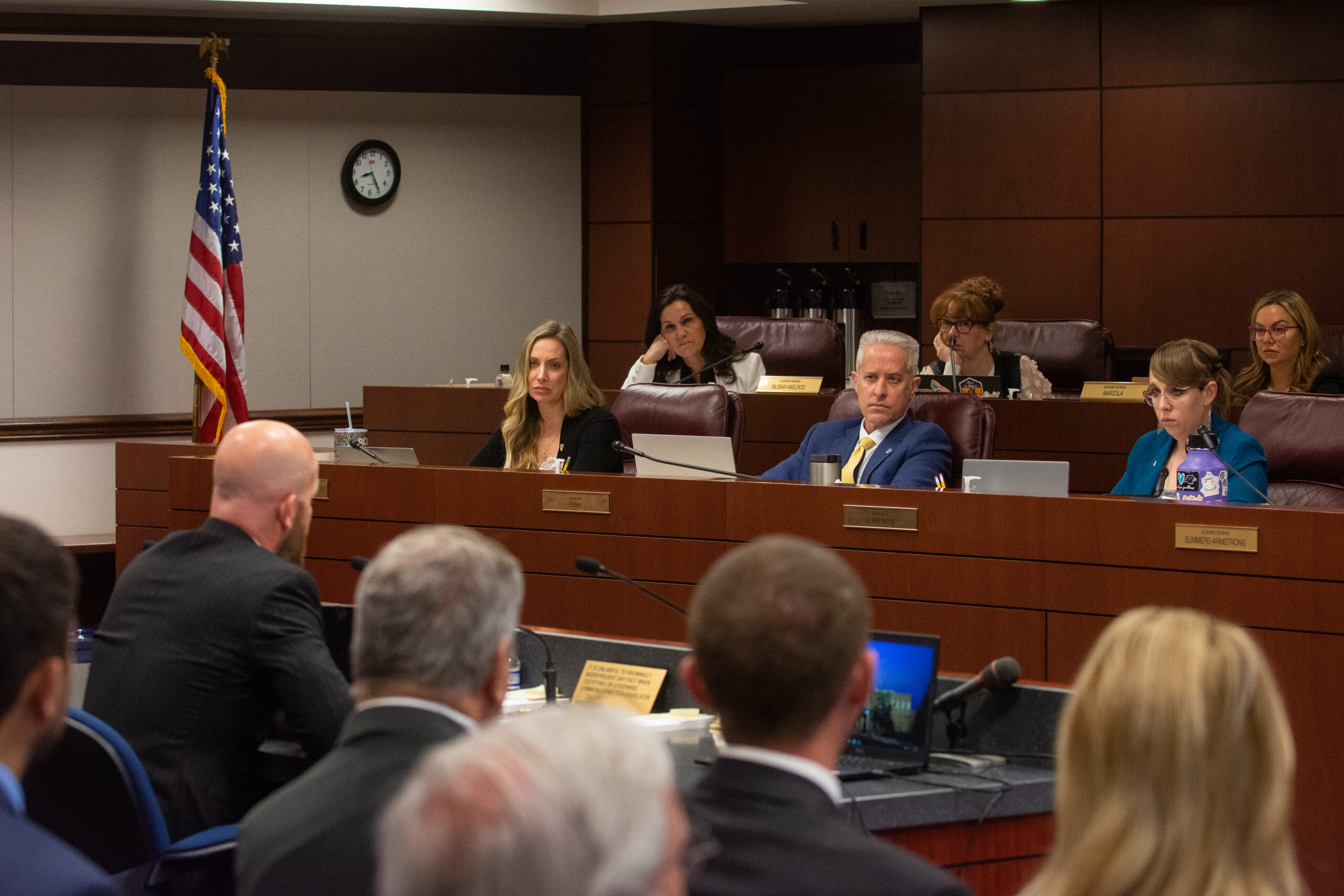Health care providers, trial lawyers reach deal to raise medical malpractice damages cap

Following fraught discussions over a bill proposing to significantly raise Nevada’s $350,000 cap on pain and suffering damages in medical malpractice lawsuits, health care providers and trial lawyers presented lawmakers with a deal Friday to establish a new cap of $750,000.
The deal, first reported by The Nevada Independent, is the product of a more than two-decade-long fight between politically powerful trial lawyers and Nevada doctors — and is a significant step down from other proposed caps of $2 million, $2.5 million and even no cap at all that were previously discussed this session. Matthew Sharp with the Nevada Justice Association, an organization of independent trial lawyers, presented the new compromise in the form of an amendment to AB404 on Friday during a hearing on the bill in the Senate Judiciary Committee.
“We know that the issues dealing with medical malpractice are hard fought, they're emotional on both sides,” Sharp said. “We appreciate hospitals, the doctors for their negotiations. Sometimes I tell a client, the best deal is the one nobody's happy about.”
As amended, the current cap of $350,000 would increase by $80,000 every year for five years beginning Jan. 1, 2024. After the cap reaches $750,000 in 2028, it would increase by a flat rate of 2.1 percent a year — rather than increasing at the annual rate of inflation, as was originally proposed. Pain and suffering damages, also referred to as noneconomic damages, can include compensation for pain and distress, and are separate from economic damages such as awards to cover lost wages and future medical expenses.
The measure would also increase the statute of limitations on bringing forward a malpractice lawsuit, giving plaintiffs two years (up from one year) from when they should have been able to recognize a complication or up to three years from the date of the alleged malpractice incident to bring a lawsuit. Under the deal, a tiered limit on contingency fees issued upon the successful outcome of a lawsuit would also change to a flat 35 percent limit.
Members of the Senate committee unanimously voted to amend and pass the bill. It now heads to the full Senate.
Assembly Speaker Steve Yeager (D-Las Vegas) indicated in a May interview with The Nevada Independent that all parties involved in the legislation would have to work together to find a compromise, and a final deal would likely leave none of those involved completely satisfied.
“It’s a question of, do you want lasting peace on this issue, or do you want a bill every single session on this?” Yeager said at the time.
That premonition proved true — representatives of the trial lawyers and medical providers expressed some consternation surrounding the outcome of the deal to The Nevada Independent.
Supporters of raising the cap have argued the $350,000 limit has not properly compensated victims for devastating, often life-altering medical mistakes. They’ve said that raising the cap is necessary to bring justice for patients experiencing failed reproductive functioning, irreversible harm and even death in some cases.
Opponents of the measure have argued that raising the caps on malpractice lawsuits could drive more medical practitioners out of the state by increasing costs on malpractice insurance and the frequency of lawsuits. In the early 2000s, rising insurance rates for medical malpractice lawsuits hit Clark County-based OB-GYNs particularly hard, prompting 30 OB-GYNs to leave their practices, according to a letter from the Nevada Hospital Association to the Assembly Judiciary Committee.
Many of the arguments from opponents echo those from when the state originally created caps through a ballot initiative in 2004 dubbed “Keep Our Doctors in Nevada.” Under an expansive political campaign by the state’s doctors and health insurers — largely centered on the exit of OB-GYNs and the increasing size of malpractice damages — voters approved the measure by a 19-point margin.
In the years since, however, the state’s trial lawyers have repeatedly sought to chip away or otherwise wholly remove the caps. Notably, that includes a push in the 2009 legislative session that directly followed a severe outbreak of hepatitis C in Las Vegas, which came after a single clinic reusing needles exposed more than 50,000 people to the virus.
This story was updated at 1:55 p.m. on Friday, June 2, 2023, to include details of the amendment and the hearing in the Senate Judiciary Committee.


